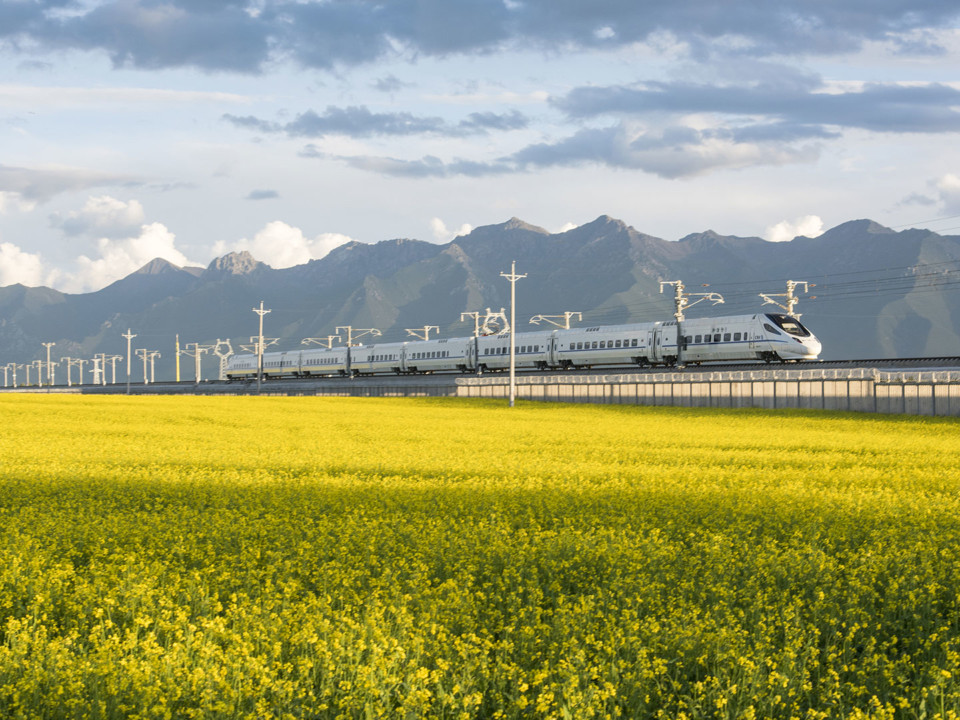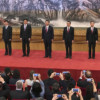As communities around the world build more high-speed rail lines, the United States continues to lag behind. The largest high-speed rail network in existence today is in China, with 22,000 kilometers (13,670 miles) of high-speed rail lines and thousands more in the works.
China’s fastest train, the Fuxing, runs from Beijing to Shanghai and can travel up to 350 kph (217 mph) — a 4.5 hour trip that used to take twice as long.
In contrast, the fastest train in the United States is Amtrak’s Acela line which runs along the Northeast corridor between Washington D.C. and Boston. That train travels up to 214 kph (150 mph).
Here’s what the United States would look like if it had high-speed rail lines that traveled as fast as China’s current Fuxing train.
The purple circles represent one hour of travel, while the yellow ones are 4.5 hours of travel time. Click on the map to learn more.
In just one hour, commuters could travel from New York City to Washington D.C., from Dallas to Houston, and from Orlando to Miami.
In 4.5 hours, travelers can get from Chicago to Nashville, San Francisco to San Diego, and from Mexico City to Monterrey, Mexico.
Despite the lack of national-level, high-speed rail in the United States, states and local government have been working to create regional lines.
The state of California is currently building a high-speed rail line between Los Angeles and San Francisco with speeds up to 354 kph (220 mph) – but the full line won’t be ready until 2029. That would make the trip only about 2 hours and 40 minutes. For comparison, a flight between the two cities is about an 1 and 35 minutes.
The private company Brightline will also begin rail service this year from between Miami, Florida and West Palm Beach with the aim of eventually traveling from Miami to Orlando in 3 hours, which is about 78 mph which doesn’t qualify as high-speed rail.
Experts have cited many reasons for the lack of U.S. investment in high-speed rail. For one, the U.S. has far more land than other nations that have adopted high-speed rail. The vast territories to be connected would make high-speed rail construction costlier. The distances also make air travel more practical, because people can travel farther in less time.
Another issue is convenience. The population density of the United States is lower than places like China, the EU, and Japan that have high-speed rail. This makes it harder for Americans to access the trains. Many live in suburbs, which means travelers would still require transportation to a city in order to reach a bullet train.
The U.S. also has a strong car culture with a long history of automobile ownership, which makes a shift in transportation habits more difficult.
 CGTN America
CGTN America


